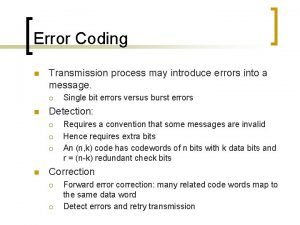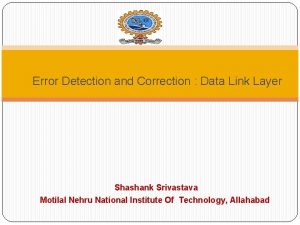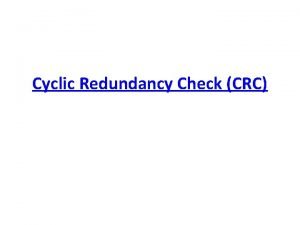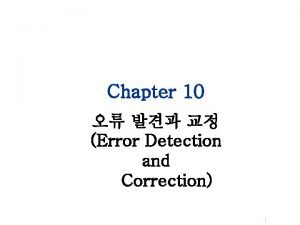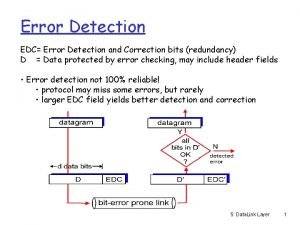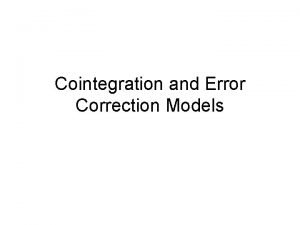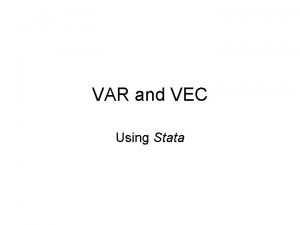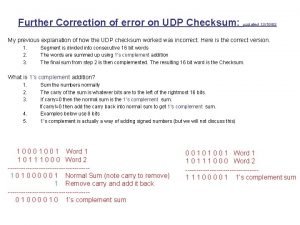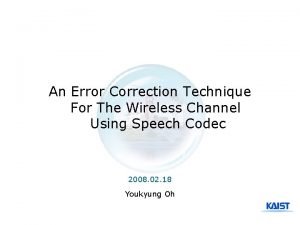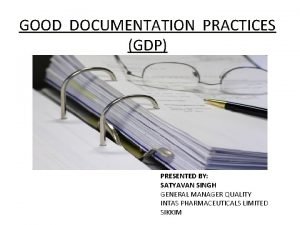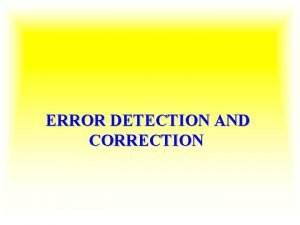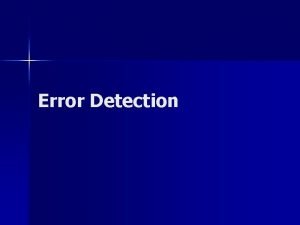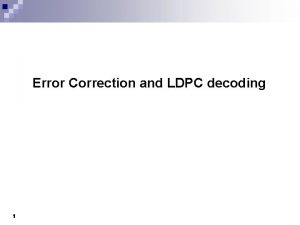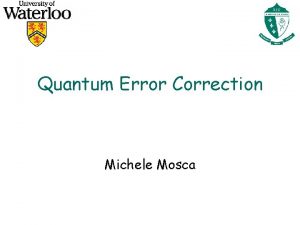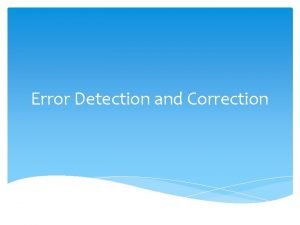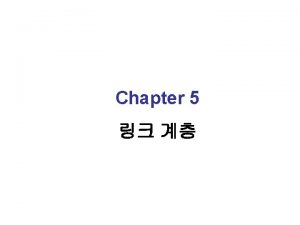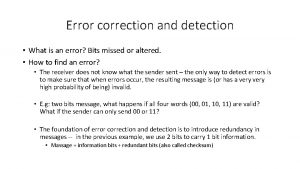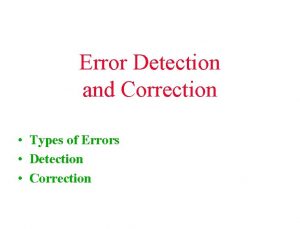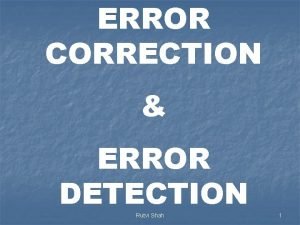Error correction and detection What is an error














- Slides: 14

Error correction and detection • What is an error? Bits missed or altered. • How to find an error? • The receiver does not know what the sender sent – the only way to detect errors is to make sure that when errors occur, the resulting message is (or has a very high probability of being) invalid. • E. g: two bits message, what happens if all four words (00, 01, 10, 11) are valid? What if the sender can only send 00 or 11? • The foundation of error correction and detection is to introduce redundancy in messages -- in the previous example, we use 2 bits to carry 1 bit information. • Massage = information bits + redundant bits (also called checksum)

General approaches of error correction and detection • How to design codes that have error correction and detection capability? • To detection n-bit errors, we must make sure that after n-bit are altered in a message, the resulting message is invalid (something that sender will never send). • To be able to correct n-bit errors, we must make sure that for a valid message, for each of the 1 to n bits altercations, the resulting message must have no overlap with other valid messages as well as the potential n-bit errors from any other valid message. • We need to have a way to measure the “spacing” between valid messages (which are sometimes called valid codewords – all possible messages that the sender can send): Hamming distance

Hamming distance • Hamming distance between two codewords: how many bits need to be changed in order for a codeword to become the other. • The number of different bits between two codewords • E. g. What is the hamming distance between 010101 and 111000? • Let a code be the set of all valid codewords. Hamming distance of a code is the minimum Hamming distance between any of the two codewords in the code. • Example: What is the Hamming distance of Code {010101, 111000, 000111, 111111}?

Hamming distance and the error detection/correction capability • Let the Hamming distance of a code be N. • How many bits of errors can be detected? • How many bits of errors can be corrected? • Given code {0000, 00001111, 11110000, 1111}. Compute the Hamming distance. How many bits of errors can be detected? How many bits of errors can be corrected? • What is Hamming distance of the Even parity code?

Error correction code • How many (r) redundant bits do we need to correct a single error for the m information bits? A message contains m+r bits total number of possible codewords: 2 m+r total number of valid codewords = 2 m To correct single error, each single error must results in a different (invalid) codeword. • Total number of (invalid) codewords for one bit error = (m+r)2 m • total number of valid codewords plus the total number of (invalid) codewords for single bit error must be less than the total number of possible codewords. • • 2 m+(m+r)2 m <= 2 m+r m+r+1 <= 2 r

Error correction code • How many (r) redundant bits do we need to correct single error for the m information bits? m+r+1 <= 2 r m = 1, m = 2, m = 3, …… m = 1000, r=2 r=3 r = 10 • This formula gives the lower bound of the redundant bits to correct a single error. Hamming code achieves this lower bound (Chapter 3. 2. 1) • How many redundant bits are needed to detect a single error?

Error control • Two options • Use error correction code • Use error detection code with retransmission • Which option is better? • Intuition? • Example: assume an error rate of 10 -6. Each packet carries 1000 bits information. The system will only have single bit errors. Quantitatively compare the two options. • From the example, can you derive when should error correction code be used, and when should error detection code with retransmission be used?

Error detection code • Parity code: detect single bit error • In communication system, this is not good enough. • We must be able to detect more errors. • The most commonly used error detection code is called polynomial code or cyclic redundancy code (CRC code)

CRC code •

How does the sender compute the checksum? •

How does the receiver check to see if a received frame has error? • Divide the data frame 1101011011 1110 by the generator 10011 • Divisible: no error • Not divisible: error

Exercise • Generator: 1001 • Data: 10000011 • What is the data frame to be sent? • Received 1101100. Is this a valid packet?

Power of the CRC code • Depending on the selection of G(x) • Let T(x) be the frame polynomial, E(x) be the error polynomial and G(x) be the generator polynomial • We want to make sure that when E(x) is not zero, (T(x) + E(x)) / G(x) = E(x)/G(x) is not zero. • Detect single bit error E(x) = xj : if G(x) has more than two terms, guarantee to detect all single bit errors • Detect two errors: E(x) = xj+xk=xk(xj-k+1): xk+1 (k<32768) cannot be divisable by x 15+x 14+1 • Detect odd numbers of errors: no polynomial with an odd number of terms has x+1 as a fac

CRC code use case • Ethernet generator polynomial (CRC-32) x 32+x 26+x 23+x 22+x 16+x 12+x 11+x 10+x 8+x 7+x 5+x 4+x 2+x 1+1 • Detects all bursts of 32 bits or less, all bursts affecting an odd number of bits, etc. • Hamming distance of 4.
 Crc example
Crc example Error detection and correction in computer networks
Error detection and correction in computer networks Error detection and correction in data link layer
Error detection and correction in data link layer Concept of redundancy in error detection and correction
Concept of redundancy in error detection and correction Error detection and correction
Error detection and correction Edc error
Edc error Transmission error in computer networks
Transmission error in computer networks Error detection in computer networks
Error detection in computer networks Error correction
Error correction Vector error correction model stata
Vector error correction model stata Eror
Eror Udp checksum error detection
Udp checksum error detection Wifi error correction
Wifi error correction Pecs four step error correction
Pecs four step error correction Typical retention period of batch related records
Typical retention period of batch related records
